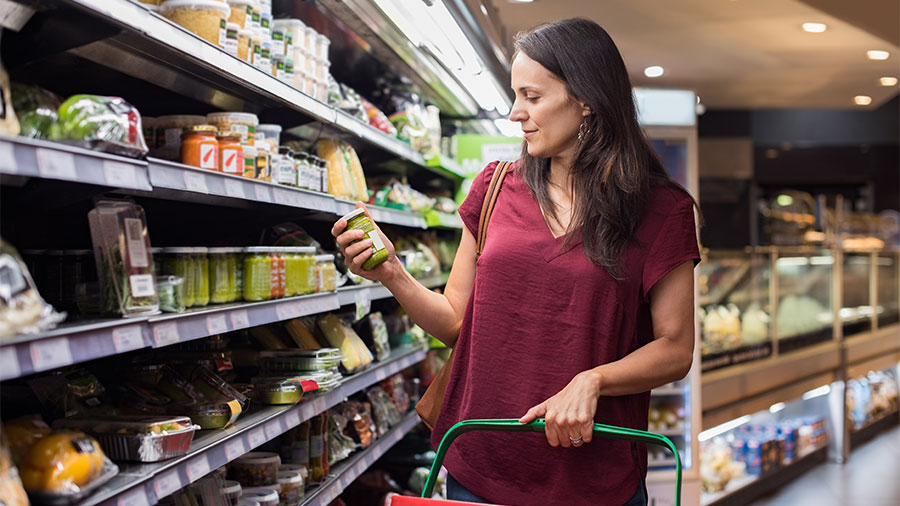We all want to believe that consumers make decisions on products and services strictly based on merit, with the best one winning. In spite of that hope, psychologists and retailers agree that in many cases this just isn’t true. Quality aside, sometimes the flashier, prettier or sexier product wins the day.
So what does this mean for retailers and product manufacturers? What it means is that creating a terrific product is only part of the formula for sales success. Packaging it perfectly, complete with eye-catching graphics and colors, is just as important to your financial success. So just as you’re in control of your business’ accounting, you have to be in control of your packaging.
Even so, many small business owners and product manufacturers don’t have a clue about how to make an attractive package. While it’s true that aesthetics are subjective and variable from one person to another, there are some universal truths in regards to color, shape, practicality and messaging, all of which can be applied to all product types to increase sales and customer attention.
Let’s take a fresh, captivating look at these truths in greater detail.
1. Messaging
In the world of product packaging, messaging is as much about the verbiage used on your package as it is about the non-verbal cues. A high-quality color picture of the product conveys an image to the consumer and provides the consumer with an idea of what to expect. If this outer image does not jibe with what the consumer actually finds inside, you’ve got a credibility problem, and may have just lost his or her trust.
Additionally, all of the basic tenets of design still apply, but simplicity is especially important. Consumers should be able to look at your product package and answer two simple questions:
- What is the product for?
- What brand makes it?
It should be clear and obvious to the consumer what he or she is buying. They shouldn’t have to necessarily pick the package off the shelf to answer these questions. Questions relating to product specifics like ingredients, nutrition or manufacturing location might require further investigation, but determining what it is and who makes it should be easy.
2. Shape
A product’s shape implicitly communicates a few things to the consumer. Products that have a slimmer or more efficient package design imply that the product itself is slimmer and healthier, and even imply that the item itself will bestow these attributes on consumers that use it.
Products that are more round are considered softer, sometimes more feminine, while products with harder edges might be considered tougher or more masculine. The best example of this is the curvy shape of liquid dish soap bottles, because some say that the bottle resembles the shape of a female in order to appeal to women buyers.
A complimentary aspect product shape is texture. The tactile experience of picking up a product greatly affects whether a consumer will purchase it. In fact, for many manufacturers, getting the customer to pick the product up off the shelf equates to making a sale. Consumers are more prone to buy items once they have removed them from the shelf.
3. Practicality
It’s important to remember that you’re designing your package to function in the real world. People will need to be able to transport it easily, store it and in some cases, throw away the packaging without inconveniencing themselves. You want the package to be attractive, but you should also err on the side of usability as well.
Complementary to practicality is being environmentally responsible. Most consumers are starting to hold companies accountable for their environmental practices and, according to this April 2015 study by GfK, “two-thirds of American consumers agree that brands must be environmentally responsible.” The moral of the story is while your packaging design may be gorgeous, it could hurt your sales chances if it’s overly wasteful or made of non-recyclable products.
4. Color
Perhaps the most studied element of any design is color. Online articles abound delineating the best and worst colors for all types of reasons: too harsh, too soft, too serene, too bold. But what does all of that mean in relation to packaging?
In short, colors evoke an intrinsic emotional response that you, the product manufacturer, should be aware of when designing both your packaging and your product. For instance, making an aromatherapy oil diffuser meant to promote peace and tranquility in a bright red color will have the opposite calming effect. Why? Because in Western cultures, red has long been associated with strength and passion.
Here’s a breakdown of colors and the emotions they are most closely associated with.
- Red – Energetic, Passionate, Visceral
- Purple – Sophisticated, Mysterious
- Blue – Dependable, Trustworthy, Puts at Ease
- Green – Calm, Freshness, Health
- Lighter Greens – Serenity
- Darker Greens – Wealth and Affluence
- Yellow – Hope, Positivity, Creativity
- Orange – Vitality, Excitement, Fun
- Brown – Strength, Durability, Earthiness
- Black – Prestige, Class, Sophistication
- White – Pure, Clean, Soft
In addition to the above characterizations, colors are also classified as hot and cold. Hot colors, like red, yellow, black and orange are associated with excitement and energy. Cold colors, like purple, blue, brown and white are associated with calmness and security.
The psychology behind product packaging may seem far-fetched, but a consumer’s visual impression of a product and brand cannot be oversimplified. Success in the consumer marketplace is about more than having a great product; it’s about understanding what appeals to the customer, in some cases on a very basic level.
If you’re looking for more guidance on how to make your product successful, continue on to our article on how to get your product on store shelves.













